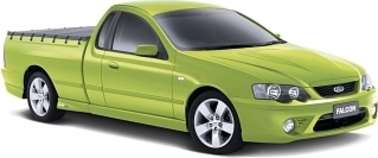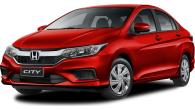The BF Falcon was to be the cure Ford needed to get sales of the Falcon moving again after a painful period of stagnation with the unloved AU. It followed the BA, which was Geoff Polites' bold move to reinvigorate Falcon sales following on from the disastrous AU.
Had the AU been a runaway success the BF probably would have been the model that followed, but tough times call for bold measures and Polites pulled forward the Falcon program and launched the BA earlier than he would have liked. It worked, the AU was forgotten and the BA embraced. Ford appeared back on track.
But if the letters and e-mails received at Carsguide HQ are an accurate reflection of the state of play at Ford the BA was a good car, but flawed. Owners generally liked them, but were frustrated by the niggling problems they encountered, and Ford's apparent lack of interest in helping fix them.
The BA suffered a myriad of build quality and reliability problems, all of which suggested the program had been rushed in an effort to put the AU blues behind them as quickly as possible. The BF was the first major update of the Falcon after the BA launch, by which time most of the issues that affected the BA seem to have been addressed.
MODEL WATCH
Viewed from afar it was easy to conclude that Ford did little in moving from the BA series to the BF. Discerning the differences required a keen eye. Externally the BF was little changed, but it didn't need changing. In the course of the BA model change just about every panel was changed, and the result was a much more appealing look.
Three years on it still looked fresh so there wasn't much incentive to spend heaps on panel change. If you cared to look closely you might spot revised bumpers, wheels, taillights, trim and paint colours, but not much more.
The main changes were made under the skin where the six-cylinder engine underwent further development and came out with more performance and better economy. The 4.0-litre six got a more advanced valve timing system that altered the intake and exhaust camshafts independently for better efficiency and a reduced idle speed. Power jumped from 182 to 190 kW.
Ford's popular turbo six also grew legs, with power climbing to 245 kW and torque jumping 30 Nm to 480 Nm. The fuel miser in the range was the E-Gas dedicated LPG version of the 4.0-litre six, which delivered a much more economical motor with a punch of 156 kW and 372 Nm.
There were also two 5.4-litre V8s on offer. The entry-level three-valve engine boasted knock sensors, which allowed more spark advance, and the performance grew by 10 kW and 30 Nm to 230 kW and 500 Nm respectively. The sportier four-valve Boss 260 V8 remained unchanged in the XR8.
The base models continued with a revised four-speed auto, but the real talking point at the time was the new ZF six-speed automatic transmission on some of the premium models. It was the first time an Australian car had a six-speed auto and it was one shared in common with cars like the BMW 7-Series and Jaguar XJ.
Fuel economy was a major talking point when the BF was launched; the BA was the thirstiest of the big cars and Ford needed the BF to be better. So it was. The volume-selling models improved 5.2 per cent to claim a combined fuel economy figure of 10.9 L/100 km.
With no call for major visual changes Ford made few alterations to the interior, apart from making some minor changes to the interior plastics.
The model range began with the XT and added the Fairmont and Fairmont Ghia on the prestige side, and the XR6, the sizzling hot XR6 Turbo and rumbling XR8 on the sporty side.
Ford released a MkII BF in 2008 with more fuel economy improvements, and extended the availability of the six-speed auto to the base model XT.
IN THE SHOP
Build quality was an issue with the BA/BF Falcons, although it was less of a problem with the later model. It was particularly noticeable on the inside where the fit and finish wasn't up to scratch.
The six-cylinder engine is robust and reliable, having benefited from years of development. Fuel consumption is a concern. Generally the V8s are smooth and pack the sort of torque wanted, but there are lots of reports of problems extracting the spark plugs from the three-valve engine come service time. The plugs break easily while mechanics attempt to remove them and it's then a case of lifting the heads to get them out.
Noisy diffs in XRs are a common complaint and it's nothing to hear of cars having two, three or more diffs. Ford usually replaces them with new diffs up to a point, but then reverts to using used diffs as replacements. Noisy brakes are annoying and there seems no answer for complaint cars. The noise is a rubbing noise as if the pad is constantly rubbing on the disc. Warped discs can also be a problem, more so with the performance models.
IN A CRASH
An Electronic Stability Program was a key improvement on the BF, although the XT and Futura models missed out. Front and side airbags were available for a comprehensive crash package. The BF was rated at five-stars for crashworthiness.
AT THE PUMP
The BA was criticised for its relative lack of fuel economy compared to its competition, but Ford hit back with significant improvements in the BF. Depending on the drivetrain Ford claimed 10.2-10.9 L/100 km for the volume-selling six. Ford's six can readily be converted to run on LPG.
OWNERS SAY
Wesley Hartley bought his 2007 BFII XR6 six months ago with 24,000 km on the clock. While he loves its looks and its handling, he's not so convinced of its build quality. It's been back to his dealer several times with diff issues. The original diff was replaced, and the replacement was also replaced because it was noisy. There have also been ongoing problems with noisy brakes.
Paul Raudino took advantage of the pre-FG run-out deals on the BF earlier this year and traded his AU on a 2007 BFII Falcon ES. The BF and is far better to drive than the old AU, he says. The six-speed auto makes it great to drive and it gives great fuel economy on a trip.
Two years ago, after 40 years driving V8s, David Walker bought a six-cylinder BF wagon. He's been impressed by the power and smoothness of the engine, and even more so by the fuel economy. To date it has only been back to the dealer for its scheduled logbook services -- everything is just spot on after 40,000 km.
James Lehane and his wife have owned a second-hand BF XR6 Turbo for just over a year, and both love the car, even though they admit it's a bit of a gas-guzzler. They bought it because they say the BA/BF XR is the best looking Aussie-made car of the period, the six-speed auto is hard to fault, and the Turbo is a fast and satisfying daily driver. If they could they would improve the steering feedback, reduce the weight, and the fuel consumption, fit discs that don't warp, and improve the fit and finish of the interior plastics.
LOOK FOR
o Family-sized motoring
o torquey six performance
o new six-speed auto trans
o sizzling turbocharged XR6T
o variable build quality
o noisy diffs
RATING
o 70/100
Ford Falcon 2005: Classic
| Engine Type | Inline 6, 4.0L |
|---|---|
| Fuel Type | Unleaded Petrol |
| Fuel Efficiency | 11.5L/100km (combined) |
| Seating | 5 |
| Price From | $3,410 - $5,390 |
Pricing Guides








.jpg)

.jpg)













.png)



